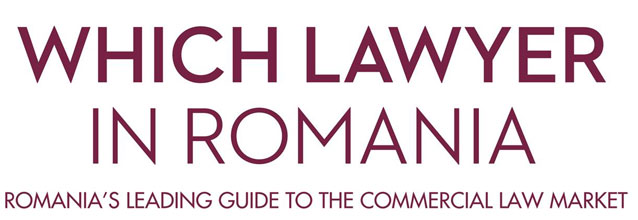 Romania is a country blessed with rich energy
resources compared with other countries in Europe, especially in Western
Europe. Almost 70 % of Romania’s primary energy demand can be met by domestic
energy resources.
Romania is a country blessed with rich energy
resources compared with other countries in Europe, especially in Western
Europe. Almost 70 % of Romania’s primary energy demand can be met by domestic
energy resources.
ROMANIA HAS OIL. Indeed, Romania was the first
country in the world to commercially exploit oil (in the Ploiesti area), as
officially registered in international statistics. Romania not only extracts
oil, but has also developed a chain of petroleum refineries in which crude oil is processed and refined into products such as gasoline, diesel fuel, asphalt base, heating oil, kerosene and liquefied petroleum gas.
Romania was one of the largest producers of oil
in World War II and the oil extracted from Romania was essential for the German
Wehrmacht in its prosecution of the war. Hence, the petrochemical refineries near Ploiesti were heavily bombed by American bombers. After the war, a heavy reconstruction
and expansion of these damage facilities was undertaken by the communist
regime. Since then, most of the industry has been privatized. Current oil
reserves are estimated at 70 million tonnes with an annual production of around
5 million tonnes.
Since it possesses substantial oil refining
capacities, Romania is particularly interested in the Central Asia-Europe
pipelines and seeks to strengthen its relations with some Arab States in the Persian Gulf.
With 10 refineries and an overall refining capacity of approximately
504,000 bbl/d (80,100 m3/d), Romania has the largest refining
industry in the region. Romania's refining capacity far exceeds domestic demand
for refined petroleum products, allowing the country to export a wide range of
oil products and petrochemicals — such as lubricants, bitumen, and fertilizers
— throughout the region.
ROMANIA HAS GAS. Romania's natural gas reserves are
estimated at 180 billion cubic metres, with an annual production of around 12
billion cubic metres. Recent announcements indicate that significant additional
conventional gas resources have been discovered in the Black Sea. Currently, a
technical solution to bring the gas to the shore is under discussion.
As regards unconventional gas,
international companies have started exploring the country's potential. It is estimated that Romania has the third highest
potential in Europe for shale gas (after France and Poland). The subject of
unconventional gas is greatly debated in the mass media and we should wait
until all technical research is completed in order to assess whether Romania
indeed has sufficient unconventional gas resources to make these commercially
viable.
ROMANIA HAS NUCLEAR POWER. 1,400 MW
of nuclear power are currently installed in the South East of Romania, in two
operational reactors of the Cernavoda nuclear power plant. This covers roughly
20% of Romania’s yearly electricity consumption. Although the Cernovoda project dates back to
the time of the Romanian communist regime, no power was actually produced from
this plant until 1996, when the first reactor was commissioned. The second reactor
was placed into operation since 2007.
The Government intends to increase the power
with an additional 1,400 MW, by completing construction on the third and the
fourth nuclear reactors at Cernavoda. In this regard, it has signed a
Memorandum of Understanding with General Nuclear Power Corporation from China.
The validity of this MoU was extended until December 2014. Governmental officials have announced that
Chinese banks are interested to finance this Euro 6 billion project.
ROMANIA HAS COAL. According to Eurocoal, Romania's known
hard coal resources are estimated at 650 million tonnes, of which 252.5 million
tonnes are commercially exploitable within the currently leased perimeters.
Lignite reserves are estimated to be a further 1,490 million tonnes. 95 % of
lignite deposits are situated in the Oltenia mining basin and more than 80 % of
these can be mined in opencast mines. The remaining lignite deposits have low
economic potential, explaining why the extraction in most other areas has
stopped. Romania’s entire hard coal and lignite output is used for heat and
power generation. The coal-fired power plants have a share of 38.5% or 5,918 MW
and other fossil fuel power plants 4,514 MW (29.5 % of Romania's consumption).
The main consumers of hard coal are the thermal power plants at Paroseni (3 x
50 MW) and Mintia (6 x 210 MW). Hard coal has the advantage of ensuring a
long-term supply for these power plants and is environmentally more
"friendly" than the dirtier burning lignite coal.
ROMANIA HAS HYDRO. Hydro is an important resource of
the Romanian energy producing sector. Hydro is second highest electricity
producing sources after fossil fuel in Romania. The Romanian and former
Yugoslavian Governments decided back in 1964 to build on Danube one of the
largest hydro power plants in Europe, named Iron Gate (Portile de Fier). The project was completed in 1970, and generates
more than 2,000 MW per hour.
On August 11, 2014, the Romanian Government
launched a public tender to select an investor for the pumped storage hydro
power plant in Tarnita. This will generate roundly 1,000 MW and will require
more than Euro 1 billion investment. Small scale hydro power plants are also a
sector of great interest for investors in Romania.
ROMANIA HAS RENEWABLES. Romania has been one of the most
dynamic markets in the last years as regards renewable energy. This was due
mainly to an attractive promotion scheme enacted as of the end of 2011, but
also to proper climatic conditions. Romania has a huge potential in all sectors
of renewable energy: wind, PV, geothermal, biomass and biogas, small hydro
power etc. Most of this potential is still unexploited, notwithstanding certain
reductions to the previously enacted promotion scheme
WHAT DOES ROMANIA NOT HAVE is a concise
energy strategy and a clear idea of what to do in the upcoming years in this
strategic sector. Although the country faces decreasing electricity consumption,
Romania intends to develop the hydro power plant in Tarnita (1,000 MW) and the
third and fourth nuclear reactors (1,400 MW). The main question would be how
commercially viable are there projects under the current circumstances.
In the renewable sector, after attracting
investments of more than Euro 6 billion with more than 4,500 MW being built in
recent years, the Government decided to implement certain measures, (most of which
are retroactive), which have negatively affected this sector and could expose
Romania to international arbitration claims.
We can only hope that the new team installed in
the Romanian Department of Energy will be successful in elaborating a clear and
concise energy strategy that ensures reliable, affordable and secure energy
sources that will allow the future development of Romania.
by Ciprian Glodeanu
Partner
Bucharest Corporate Center
58-60 Gheorghe Polizu St., 13thFloor
Sector 1, RO-011062 Bucharest,
Romania



 October 06, 2014 13:25
October 06, 2014 13:25 










